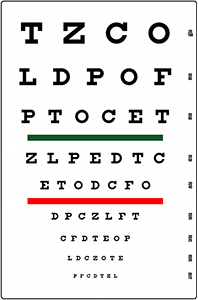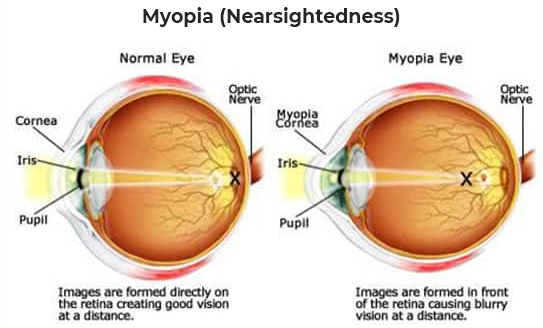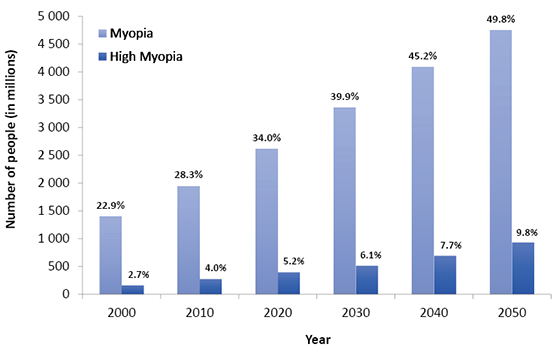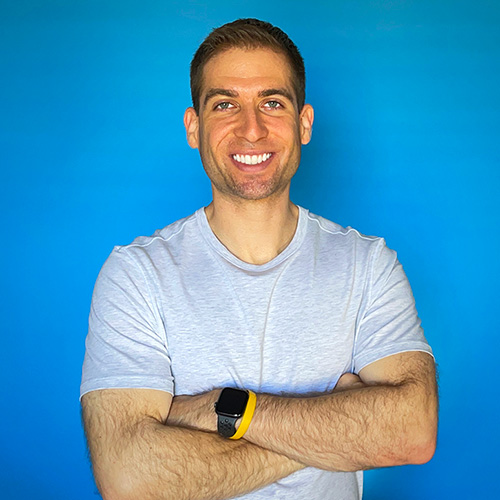I was offered glasses for my 20/35 vision ten years ago but declined them for lifestyle changes. Now my vision is perfect. I don’t need glasses and I’m doing whatever I can to prevent them. Why are we losing our vision to myopia? Can our vision impairments be reversed? And what lifestyle routines promote optimal eye health? Well, let’s get into it!
Losing Our Vision to Myopia
Ten years ago, I stood 20 feet away from a Snellen chart. It was my biannual eye exam. I attempted to read letters off the chart but struggled. What an average person could read at 35 feet away, I had to be 20 feet away. At 20/35 vision, the World Health Organization considers this mild vision loss. I was offered glasses to counterbalance my myopia. [1]

Myopia, or nearsightedness, is an eye disorder caused by abnormal axial length growth of the eye. The eye grows longer. This causes light to be focused in front of the retina instead of on it. Objects far away become blurrier but objects up close remain clear. The World Health Organization considers myopia the most prevalent cause of visual impairment globally. In some study populations, affecting as much 80-90% of people. It’s becoming a massive problem. We’re losing our eyesight. [2]

“Furthermore, high myopia is a risk factor for several pathologies of the eye including retinal detachment, cataract, open angle glaucoma and other vision-threatening conditions.” These are things I’d like to avoid. Both my parents and sisters have myopia and require glasses. My dad’s is the worst and even lead to a detached retina, and complete loss of vision for a brief period. That was scary. Worse, eye doctors and popularly held beliefs tell us this is completely normal. Myopia, poor vision, and eye health are based on genetics and age. It’s not our fault our eyes are failing.
Why is Myopia Occurring?
But a few podcast episodes I found expelled this idea. The Science of Vision by professor Andrew Huberman, and Eye Health by Doctor Peter Attia stated these beliefs as widely false. They stated this disorder was a construct of our environment and behaviors. I dug into the research and saw exactly what they did. “Myopia can be caused by both genetic and environmental factors. However, there is now evidence that genetics is only accountable for a small proportion of myopia cases and that the increasing prevalence is predominantly caused by environmental factors.”

Our eyes adapt to our environment just like our muscles adapt to physical exercise. As the world becomes increasingly indoors, and up close on digital screens, our eyes are transforming to the demand. They’re growing longer, decreasing our ability to see far away. They’re chronically stressed, inhibiting our capacity to focus. And they’re growing more vulnerable to many eye disorders. Your optometrist likely never mentioned this to you just as mine hasn’t to me. They never told me anything about maintaing, or even improving eyesight and health with changes to my environment and behavior. But this is entirely possible.
Optimal Eye Health Routines
There are a few key routines we can implement to prevent and even reverse myopia, all while improving overall eye health. While Huberman’s podcast details thirteen in-depth protocols, I’m covering the three I found most powerful.
These were the three most powerful routines I found to prevent myopia and improve eye health. I’ve followed these routines for a couple years now.
My Experience
I also want to mention that fitness, nutrition, and sleep play important roles too. Physical activity, specifically cardio, may increase choroidal blood flow and thickness [2]. Nutrition with adequate Vitamin A from sweet potatoes, carrots, or dark leafy greens provide key nutrients. And sleeping in a pitch-black room, or eliminating light exposure at night, could be important too. None of these tips were ever mentioned to me by eye doctors. The thought of maintaining or improving eye health and vision wasn’t brought up. But I found this information compelling and have been applying it for the past few years.

I decided to get another eye exam ten years later. At all my previous appointments, my eyes had slowly been getting worse. Glasses were always an option if I wanted them. I had always refused because I didn’t want my eyes to adapt to glasses, accelerating the myopic process. Now, ten years later, my right eye is 20/20 while my left is 20/25. My eyes are near perfect. My ophthalmologist said my eyes were completely healthy. No signs of macular degeneration, cataracts, or glaucoma. No astigmatism. Improving vision and barely any signs of myopia. My optimized environment and behavior improved my vision. I see clearer now than I could ten years ago.
Quick Disclaimer
I have no formal training on eyes so please consult with a professional. There are also many websites that discuss methods to reduce or eliminate prescription glasses if desired. Also, it seemed odd to me that everyone in the waiting room at my eye appointment was on their phone… Isn’t that like eating a doughnut before seeing the dentist?
Final Thoughts
Myopia is causing many of us to lose our vision. But this isn’t our destiny. It’s mostly an adaptation to our behaviors and environments. Luckily, a few key routines can save our sight. If these routines seem like a lot of effort, they don’t have to be. Outdoor light exposure can be accomplished with walks, outdoor fitness, yard work, or even working on your laptop outside. Long distance viewing can be accomplished during physical activity, gazing from a balcony, using cardio equipment in front of an outdoor window, or while driving on a highway. And if you’re not into near-far vision training, ball sports will work too. All these routines will not only support visual acuity, but overall health too. I’m so happy I came across this information. These are my latest habits for health excellence.

